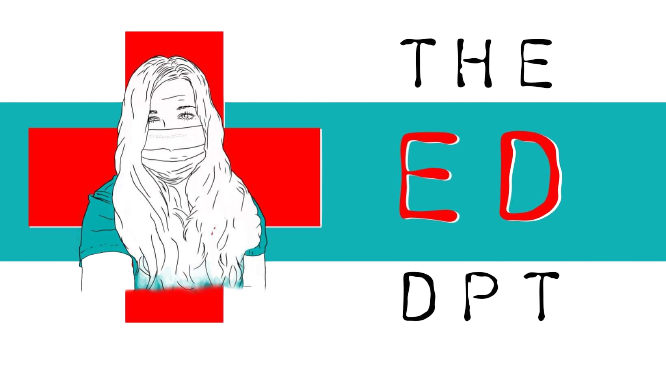
No two Emergency Department Physical Therapy (ED PT) programs are the same. However, the most common models are the embedded model, or the on-call model. This post will help delineate the pros/cons of both so you can decide what works best for your program. I’ll let you decide, which one is the “Super Model.”
The On-Call Model
This is a common origin for many thriving ED PT programs. Often, as programs are ramping up, pilot programs are taking wing, and interest is piquing, on-call models are a great way to get your feet wet in the Emergency Department. This model can also be ideal for smaller hospitals or hospitals that are not heavily trafficked by patients presenting with physical therapy related diagnoses.
How It Works –
After following the steps to set up your program on-target, you are ready to start your on-call model. This requires heavy pre-education with all stakeholders to ensure they understand why, when, and how to get in touch with your team. Once this is established, consider frequent rounding to cement learning, behavior change around consulting, and to make sure out of sight does not equal out of mind.
Once your program parameters are well defined, the on-call ED PT will respond to consults on an as-needed basis to your ED. This PT must have flexibility to respond quickly as well as defer or reallocate some of their primary caseload.
Pros –
Serves a smaller facility, restricts consults to urgent/critical needs only, allows PT to continue supporting the rest of the house which also helps with hospital throughput.
Cons –
Program may not thrive due to lack of being seen as part of the team, the program may be too successful and lead to neglected caseloads on other units, it may be difficult to establish expertise/rapport, & overall investment in program may be low leading to limited resources.
A Few Things to Consider –
Establish a dedicated time period to trial your program and assess your pre/post outcomes. (Future blog on this.) Decide what the threshold would be to convert from an on-call program to a full-time embedded program. This will require a thorough understanding of data & outcomes that are meaningful to not only the rehab department but to your other stakeholders.
Case Example –
Mrs. X is an 84 year old female brought in by ambulance due to a fall down the stairs. She has a tri-mallelolar fracture now splinted in a Bulky Jones. The ED staff attempted to teach her to use crutches prior to her return home, but it didn’t go well. The PT is called to the ED to determine how to successfully discharge this patient.
The PT defers or reassigns a patient on their primary unit to another PT and comes to the ED as quickly as possible to evaluate and treat this patient.

The Embedded Model
The embedded model often flows naturally after a successful on-call program becomes too successful to maintain on a limited basis requiring full-time allocation of support. You may also begin your program this way without an on-call trial.
This model is ideal for larger medical centers, emergency departments with multiple zones, high volumes of overflow inpatient boarders, and locations with high volumes of PT related presenting complaints. I would argue that this model would also be useful in areas that are safety net hospitals with highly underserved populations with limited access to primary care or other physical therapy support.
How it works –
One or more physical therapists staff the Emergency Department on full-time basis as a consistent part of the ED multi-disciplinary team. This is akin to having a respiratory therapist in the department on standby for intubations as opposed to the on-call model which is more like paging out to the Orthopedics department after a complex fracture. In this case the PT is a primary ED provider and not utilized as solely a consultant.
Pros –
Serves multiple sizes of facilities, allows for team rapport & engagement, triaging, ease of need identification, increased staff training opportunities, and increased availability for patients. This can also increase throughput time by having the PT immediately available.
Cons –
Not all EDs may be able to sustain productivity for a full-time PT based on patient volumes, equipment needs may increase, and staffing a full-time program may be difficult.
A Few Things to Consider –
Establish a dedicated time period to trial your program and assess your pre/post outcomes. (Future blog on this.) Determine what the primary goals of the full-time program will be. For example, are patient and provider satisfaction of higher value than billing productivity? What are the base outcomes needed to be able to feasibly support one or more employees in the department. This will require a thorough understanding of data & outcomes that are meaningful to not only the rehab department but to your other stakeholders.
Case Example –
The embedded PT is between patients and looking at the patient board. The PT notices a patient with a complaint of dizziness is listed. The embedded PT initiates a discussion with the primary team and determines they are likely able to help. Based on this team’s experience with this PTs expertise, they defer remaining care to the PT for evaluation, treatment, and discharge recommendations.
Conclusion
There are many types of ED PT program models. Hat tip to Dr. Seip in Massachussets who is running a very unique hybrid program including ED, outpatient, and inpatient acute PT all at once! However, the primary models are discussed here.
The considerations listed here are merely a starting point. Let’s connect if you’d like to learn more or discuss best models for your program or what to consider prior to launching. If you already have a program, but you feel like you want to discuss next steps, don’t hesitate to reach out.
Finally, do you have a unique PT in the ED model you’d like to share? I’d love to hear about it and feature you here.
Stay Tuned
I’ll be featuring Dr. Sarah Nechvatal, an ED PT in Wisconsin who started and staffed an on-call program. You won’t want to miss hearing about her experiences and her thoughts on direct access. Find that on our podcast page or our YouTube channel on Friday.
-Rebekah Griffith, the ED DPT



Pingback: Call On Me - ED DPT
Pingback: From Outpatient to All Patient - ED DPT